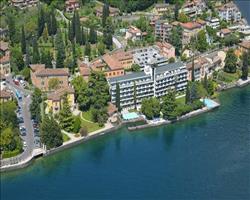Salo History
The architectural and cultural history of Salo, Italy. Churches, castles, origins and historic figures.
Like many of the towns around the lake, Salò has witnessed the ever-changing tides of history, and has been an integral town as a centre of communication and administration. An excavation of a Roman burial ground is evidence of the town’s ancient roots and from this period the attacks form the North reached the town to establish rule by the Lombards. Under the rule of the Della Scala family in the 14th century, Salò became the administrative centre of the lake and consequently its importance grew when it became the capital for the ‘Magnifica Patria’- The magnificent motherland, a league of communities in the Garda area under the rule of Venice.
It was also a prominent station during the Second World War where, in 1943, when Hitler was ploughing Italy with German troops in a vigilant attempt to hold on to the country, the new anti-German government was established In Italy and Mussolini fled to Lake Garda to reinstate The Italian Social republic in Salò. He spent a period of time here before being captured by allied forces. Important business such as the Stefani agency, the organisation that handled the majority of press releases and the Ministry of foreign affairs was also located here during this period. Culturally significant, Salò has been famed as the birth-place of violin by its creator Gaspare Bertolotti, who is said to have made the first four-stringed violin.
Palazzo of the Magnifica Patria and Palazzo del podesta
The Palazzo della Magnifica Patria is translated as the palace of the magnificent motherland, this building dates back to the 16th century and stands today as a council house. The Palazzo del Podesta is now used as a town hall and is a reconstruction of the original building that was lost in a catastrophic earthquake in 1901. The headquarters of ‘the magnificent motherland’ was situated here and on entering the hall you can see the coats of arms of its 52 Municipalities.
The Cathedral of Salò
The Cathedral is an impressive sight, considered one of the most important religious buildings on the lake. Built by Filippo delle Vacche, it sits at the heart of Salò and is dedicated to S. Maria Annunziata. The interior of the cathedral is richly adorned with a number of frescoes and artwork dating back as far as the 14th century.
Pio Bettoni Meteorological Observatory and Seismic Station
The observatory was established in 1877 and handed to Professor Pio Bettoni who took to recording the changing weather conditions. After the earthquake in 1901, it became an important scientific research centre.
Archaeological Museum
Set in the 16th Century Croen warehouse, this museum showcases numerous findings from the excavations of the Roman necropolis (burial ground) in the area of Salò. These excavations, carried out in the 1970’s, identified several graves and relics from the Roman period, including a funeral stele, a memorial stone and utensils from the everyday lives of the romans.
Nastro Azzurro Historical Museum
Opened in 1943, this museum displays documents, photos, relics, armours and weapons used by soldiers in the history of the Italian wars.
World War II
Recent excavations off the shore of Salò have revealed a missing “Duck” boat used by the US military in the Second World War. On the 29th April, 1945 members of the US forces crossed the lake to siege the villa of Mussolini. On encountering a storm the boat was lost to the depths of the lake and the bodies were never recovered, 24 hours later the German forces in Italy surrendered and Mussolini was captured. This recent discovery has given the military hope to succeed in their ‘no man left behind’ policy to recover the missing bodies.
History in Resorts Near Gulf of Salo
More Gulf of Salo Holiday Resources













